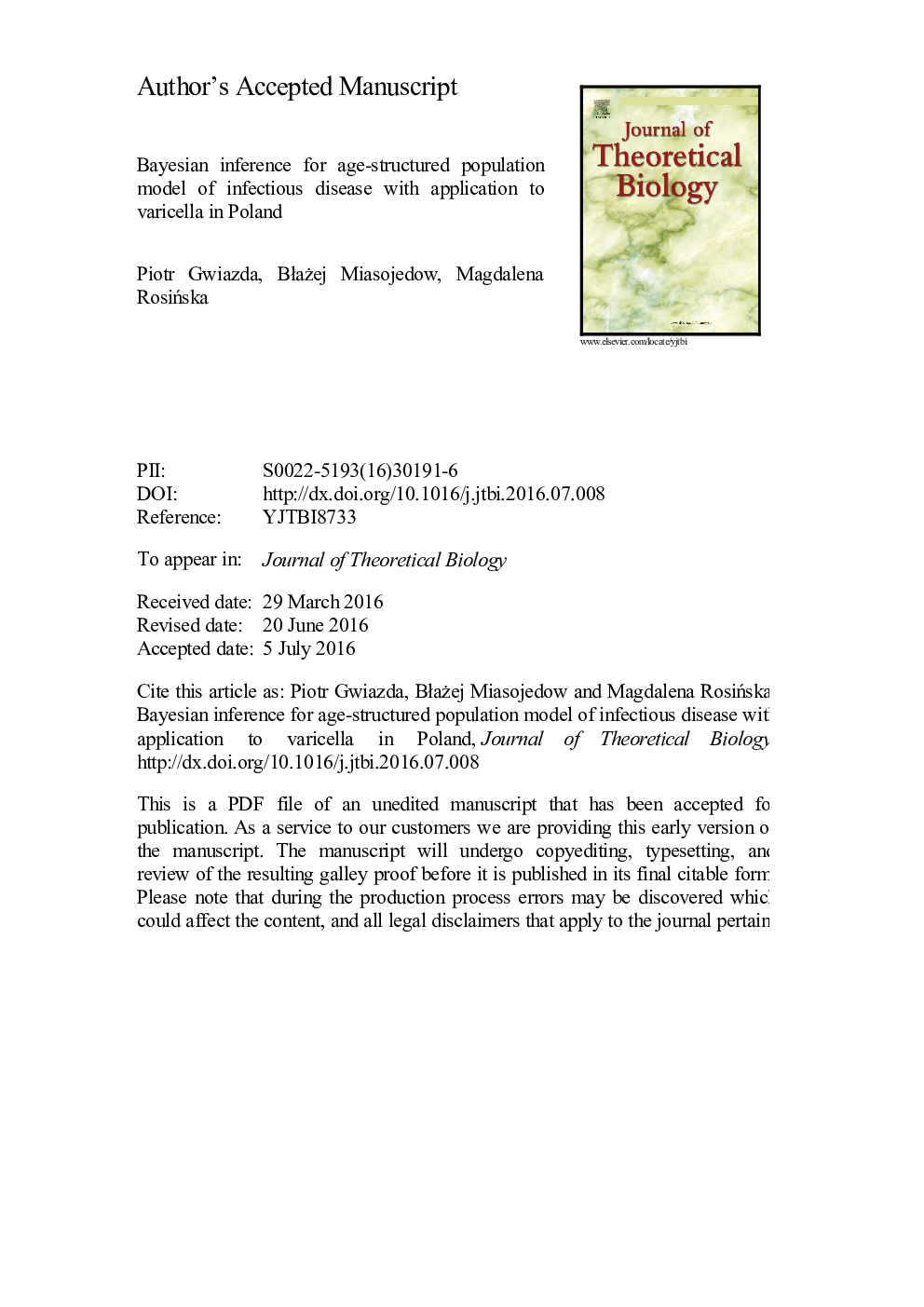| Article ID | Journal | Published Year | Pages | File Type |
|---|---|---|---|---|
| 6368936 | Journal of Theoretical Biology | 2016 | 29 Pages |
Abstract
The dynamics of the infectious disease transmission are often best understood by taking into account the structure of population with respect to specific features, for example age or immunity level. The practical utility of such models depends on the appropriate calibration with the observed data. Here, we discuss the Bayesian approach to data assimilation in the case of a two-state age-structured model. Such models are frequently used to explore the disease dynamics (i.e. force of infection) based on prevalence data collected at several time points. We demonstrate that, in the case when the explicit solution to the model equation is known, accounting for the data collection process in the Bayesian framework allows us to obtain an unbiased posterior distribution for the parameters determining the force of infection. We further show analytically and through numerical tests that the posterior distribution of these parameters is stable with respect to a cohort approximation (Escalator Boxcar Train) of the solution. Finally, we apply the technique to calibrate the model based on observed sero-prevalence of varicella in Poland.
Related Topics
Life Sciences
Agricultural and Biological Sciences
Agricultural and Biological Sciences (General)
Authors
Piotr Gwiazda, BÅażej Miasojedow, Magdalena RosiÅska,
